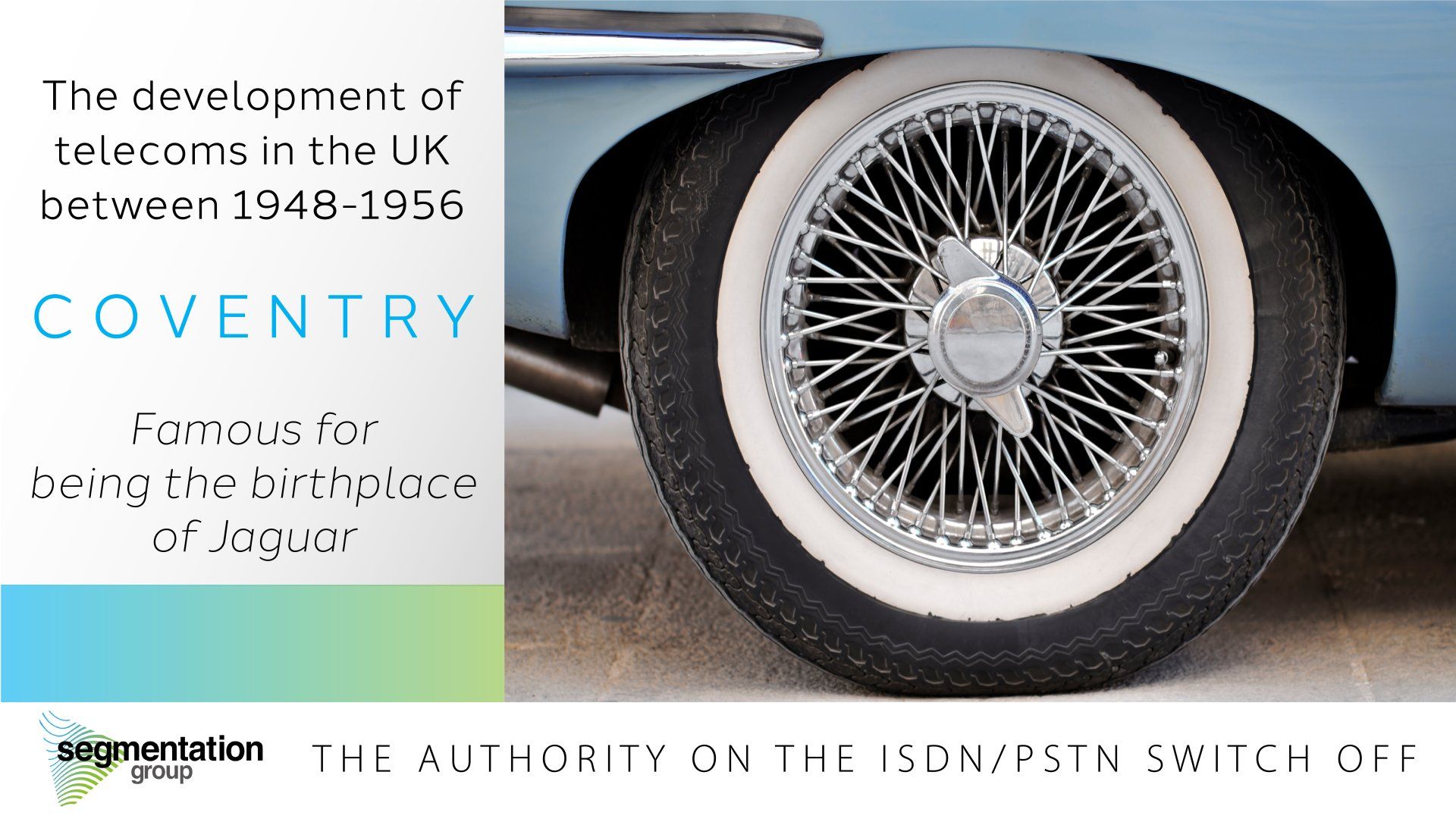The Development of Telecoms - Coventry

The Coventry area covers about 1,400 square miles, mainly in Warwickshire and Northamptonshire. It includes the interesting towns of Northampton, which has one of the few remaining round churches in England; Warwick, recalling the days of medieval chivalry with the battlements and towers of Warwick Castle; Leamington with its 900 years old “Midland Oak" which reputedly marks the centre of England; Rugby with its famous public school founded in 1567 and, of Post Office interest, its high powered radio station; Nuneaton which takes its name from a 12th century Benedictine nunnery now in ruins; Stratford-on-Avon with its Shakespearean associations and Wellingborough in addition to the rapidly growing City of Coventry.
The scenery is attractive outside the main towns and surprisingly rural considering its proximity to the industrial concentration of the Midlands.
Coventry itself is probably best known because of the bombing it suffered during the second world war and the coining of the word "Coventration". Despite the destruction to its historic buildings, there still remain houses with projecting fronts which belong to the 15th and 16th century and two of the city gates. The town grew up around the magnificent Benedictine abbey founded by Leofric, Earl Mercia in 1043; his wife was the "Lady Godiva" of the well-known legend.
Coventry is an interesting and versatile city. Throughout the ages, it has changed its predominant industry to suit the most profitable market available at the time and has therefore for most of the time maintained a high degree of prosperity. In the middle ages, the main industry was woollen textiles, but this changed to silk, then clocks and watches followed by cycles, motor cycles and cars.
The clock and cycle industries have almost disappeared now and motor cycle production is greatly reduced, but there is still a thriving textile industry and it is the headquarters and location of one of the country’s largest manufacturer of rayon yarn. The main products are, however, motor cars, machine tools and aero engines. One of the large manufacturers of telephone equipment also has a factory in the city.
The area contains 81 exchanges with approximately 45,000 exchange connections and 79,000 stations. The total staff (excluding telephonists) is 925 and the annual revenue is £1,600,000.











